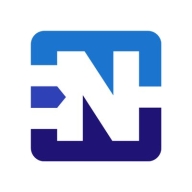


pfSense and OPNsense are popular firewall solutions. OPNsense seems to have a slight edge due to its comprehensive features and active community, while pfSense excels in customization and support.
Features: pfSense offers extensive customization, a variety of plugins, and strong routing capabilities, making it highly adaptable to complex network environments. OPNsense provides robust features like regular updates, a powerful reporting engine, and integrated two-factor authentication.
Room for Improvement: Users report that pfSense could improve documentation and simplify its installation process. OPNsense could benefit from enhanced compatibility with some hardware and better support options.
Ease of Deployment and Customer Service: pfSense generally receives praise for its straightforward deployment once users get past the initial setup learning curve, with responsive customer support. OPNsense is noted for its user-friendly deployment process and active community support.
Pricing and ROI: pfSense users find the product cost-effective with good long-term ROI due to its extensive customization options and robust features. OPNsense users appreciate the competitive pricing and feel the frequent updates justify the investment, offering good ROI.



Fortinet FortiGate offers comprehensive network security and firewall protection across multiple locations. It effectively manages data traffic and secures environments with features like VPN, intrusion prevention, and UTM controls.
Organizations rely on Fortinet FortiGate for its robust integration with advanced security policies, ensuring significant protection for enterprises, cloud environments, and educational sectors. It facilitates network segmentation, application-level security, and authentication management, securing communication within and between locations such as branches and data centers. Its efficient SD-WAN and UTM features enable streamlined data management and enhanced threat protection capabilities. Users appreciate its centralized management, facilitating seamless operations across diverse environments.
What are the key features of Fortinet FortiGate?
What benefits should users expect from Fortinet FortiGate?
Fortinet FortiGate is crucial in sectors like education, offering robust networks for secure data flow between campuses and facilitating remote learning. In enterprise environments, it allows efficient management of application traffic and security across multiple branches, while in the cloud, it seamlessly integrates with diverse platforms to enhance security infrastructure.
Netgate pfSense is widely leveraged by organizations for its comprehensive capabilities in firewalls, VPN servers, and bandwidth management. It suits LAN, WAN, and DMZ networks, offering secure, scalable, and efficient networking solutions.
Netgate pfSense stands out in diverse environments with its enterprise-grade features and cost-effective operations compared to competitors like Cisco. Deployed as an edge device, it optimizes routing, ad-blocking, content filtering, and traffic shaping. Users benefit from its versatile configurations, robust firewall protection, VPN functionality, and ISP load balancing. The open-source nature allows for extensive customization, integrating plugins like Snort and pfBlockerNG, and compatibility with third-party tools enhances its utility. The intuitive GUI combined with detailed logging and centralized management fortifies network security.
What features define Netgate pfSense?
What benefits should be considered for ROI?
Organizations in industries such as finance, healthcare, and education find Netgate pfSense integral due to its advanced security features and cost benefits. Its scalable architecture and strong VPN support are crucial for industries requiring stringent data protection and reliable remote access. The adaptability of pfSense makes it suitable for dynamic environments seeking comprehensive, secure networking solutions.
OPNsense is widely used for firewall functionalities, intrusion detection, VPN and IPSec, content filtering, securing network traffic, and remote access. It protects internal networks and manages servers securely, suitable for small to medium-sized businesses.
OPNsense is a comprehensive firewall solution leveraging open-source technology. It integrates with third-party modules like WireGuard and CrowdSec, enhancing its security capabilities. Offering on-premises and cloud deployment, it features an intuitive graphical interface, advanced reporting, VPN functionality, IDS/IPS features, and high scalability. Users find it ideal for small businesses and home networks due to its stability and ease of use. Frequent updates and an active community support its continuous improvement. However, it needs advancements in VPN selection, scalability, and technical documentation. Enhanced high availability, threat intelligence, and integration with virtualization platforms are required. User feedback suggests improvements in connectivity, alerting, traffic monitoring, and antivirus protection.
What are the key features of OPNsense?OPNsense is implemented across various industries to secure network infrastructure and ensure reliable connectivity. In fintech, it safeguards sensitive financial data while maintaining compliance. Educational institutions deploy it to protect student information and enable secure remote learning environments. Healthcare organizations use it to secure patient data and comply with HIPAA regulations. By integrating with tools like WireGuard and CrowdSec, businesses enhance their cybersecurity posture and streamline network management, making OPNsense a versatile choice for diverse operational needs.
We monitor all Firewalls reviews to prevent fraudulent reviews and keep review quality high. We do not post reviews by company employees or direct competitors. We validate each review for authenticity via cross-reference with LinkedIn, and personal follow-up with the reviewer when necessary.